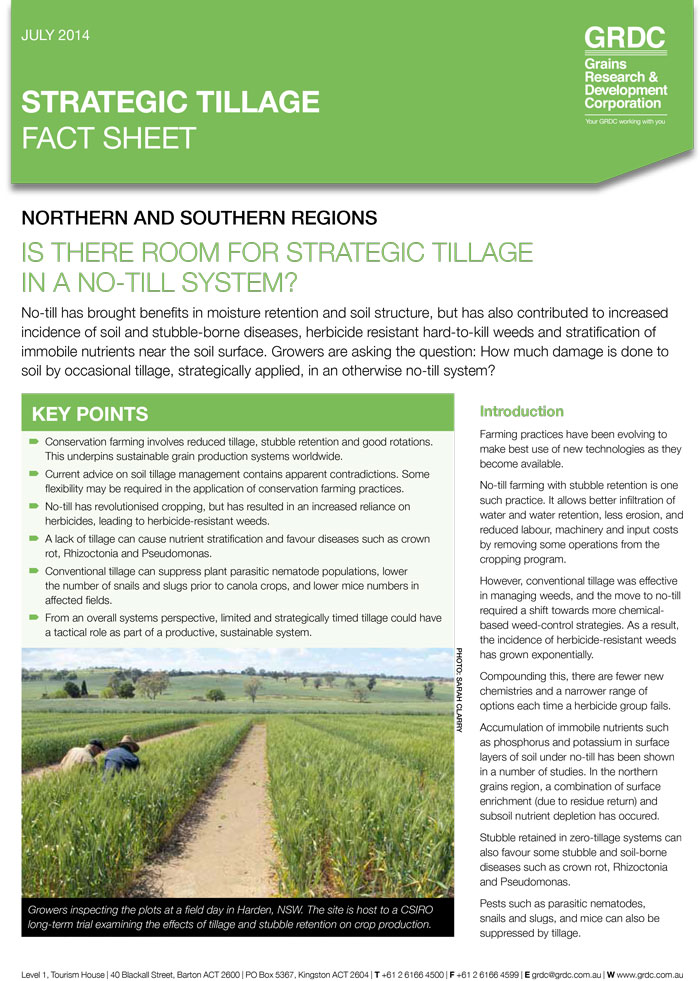Strategic tillage
Published: 1 Jul 2014

Is there room for strategic tillage in a no-till system?
No-till has brought benefits in moisture retention and soil structure, but has also contributed to increased incidence of soil and stubble-borne diseases, herbicide resistant hard-to-kill weeds and stratification of immobile nutrients near the soil surface. Growers are asking the question: How much damage is done to soil by occasional tillage, strategically applied, in an otherwise no-till system?
Key points
- Conservation farming involves reduced tillage, stubble retention and good rotations. This underpins sustainable grain production systems worldwide.
- Current advice on soil tillage management contains apparent contradictions. Some flexibility may be required in the application of conservation farming practices.
- No-till has revolutionised cropping, but has resulted in an increased reliance on herbicides, leading to herbicide-resistant weeds.
- A lack of tillage can cause nutrient stratification and favour diseases such as crown rot, Rhizoctonia and Pseudomonas.
- Conventional tillage can suppress plant parasitic nematode populations, lower the number of snails and slugs prior to canola crops, and lower mice numbers in affected fields.
- From an overall systems perspective, limited and strategically timed tillage could have a tactical role as part of a productive, sustainable system.
Want to link to this publication?
Use www.grdc.com.au/GRDC-FS-StrategicTillage to ensure your link remains current and up-to-date!
GRDC Project Code DAN00152, ERM00003
Region North, South
- 4.03 mb Strategic Tillage fact sheet (high resolution version) Is there room for strategic tillage in a no-till system? No-till has brought benefits in moisture retention and soil structure, but has also contributed to increased incidence of soil and stubble-borne diseases, herbicide resistant hard-to-kill weeds and stratification of immobile nutrients near the soil surface. Growers are asking the question: How much damage is done to soil by occasional tillage, strategically applied, in an otherwise no-till system?
- 566.81 kb Strategic Tillage fact sheet (low resolution version) Is there room for strategic tillage in a no-till system? No-till has brought benefits in moisture retention and soil structure, but has also contributed to increased incidence of soil and stubble-borne diseases, herbicide resistant hard-to-kill weeds and stratification of immobile nutrients near the soil surface. Growers are asking the question: How much damage is done to soil by occasional tillage, strategically applied, in an otherwise no-till system?
Region: North; South
Was this page helpful?
YOUR FEEDBACK
